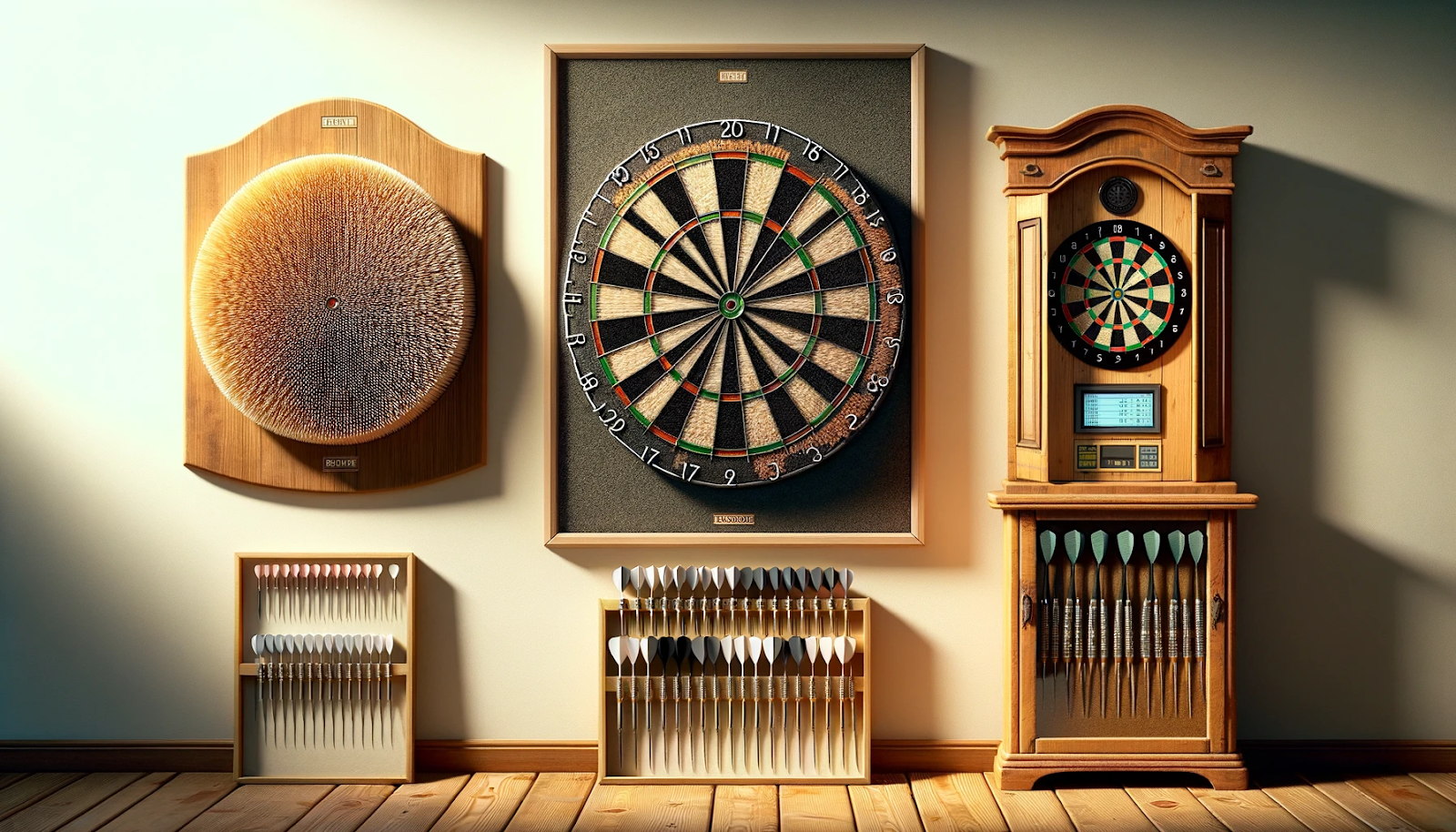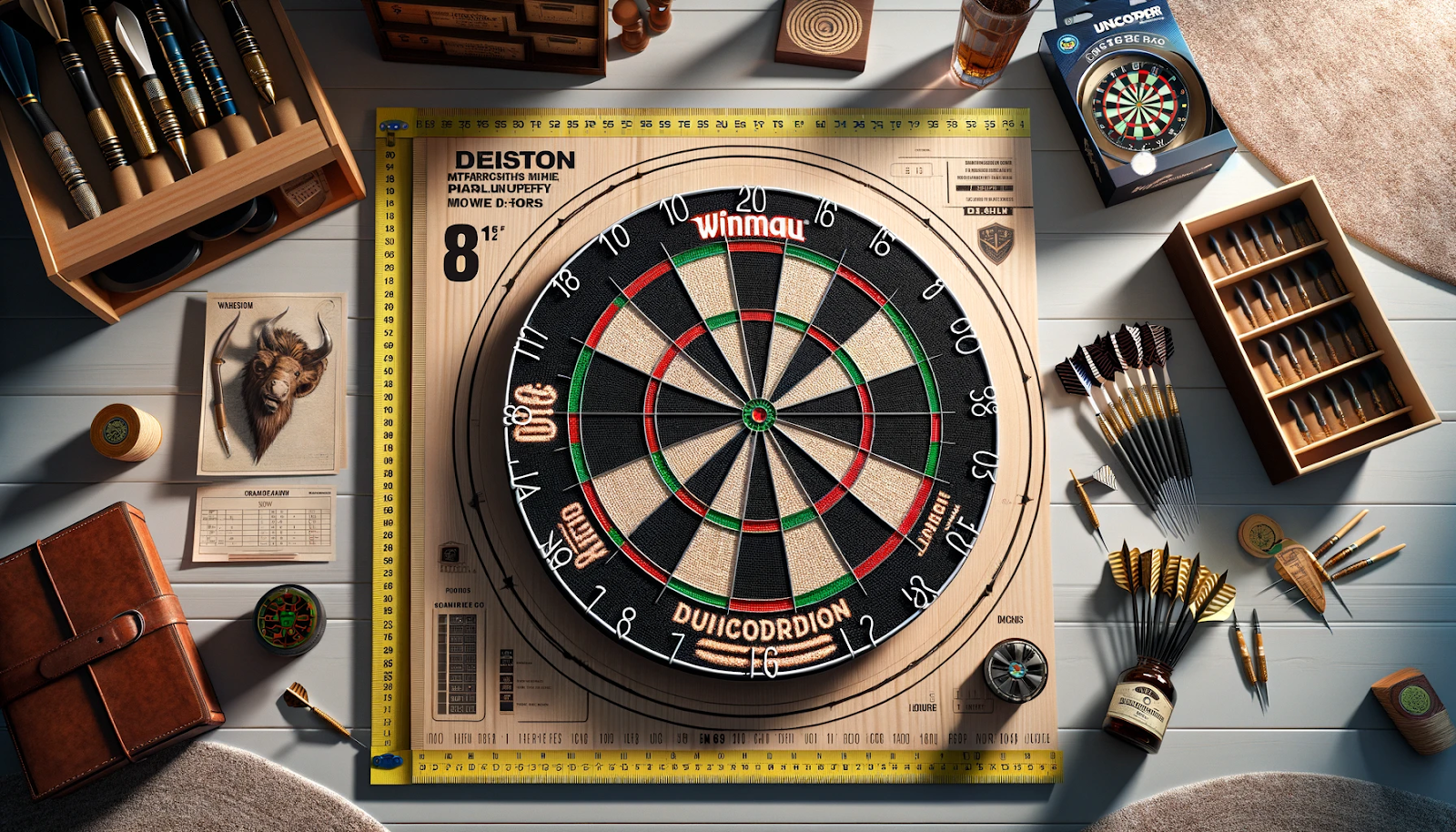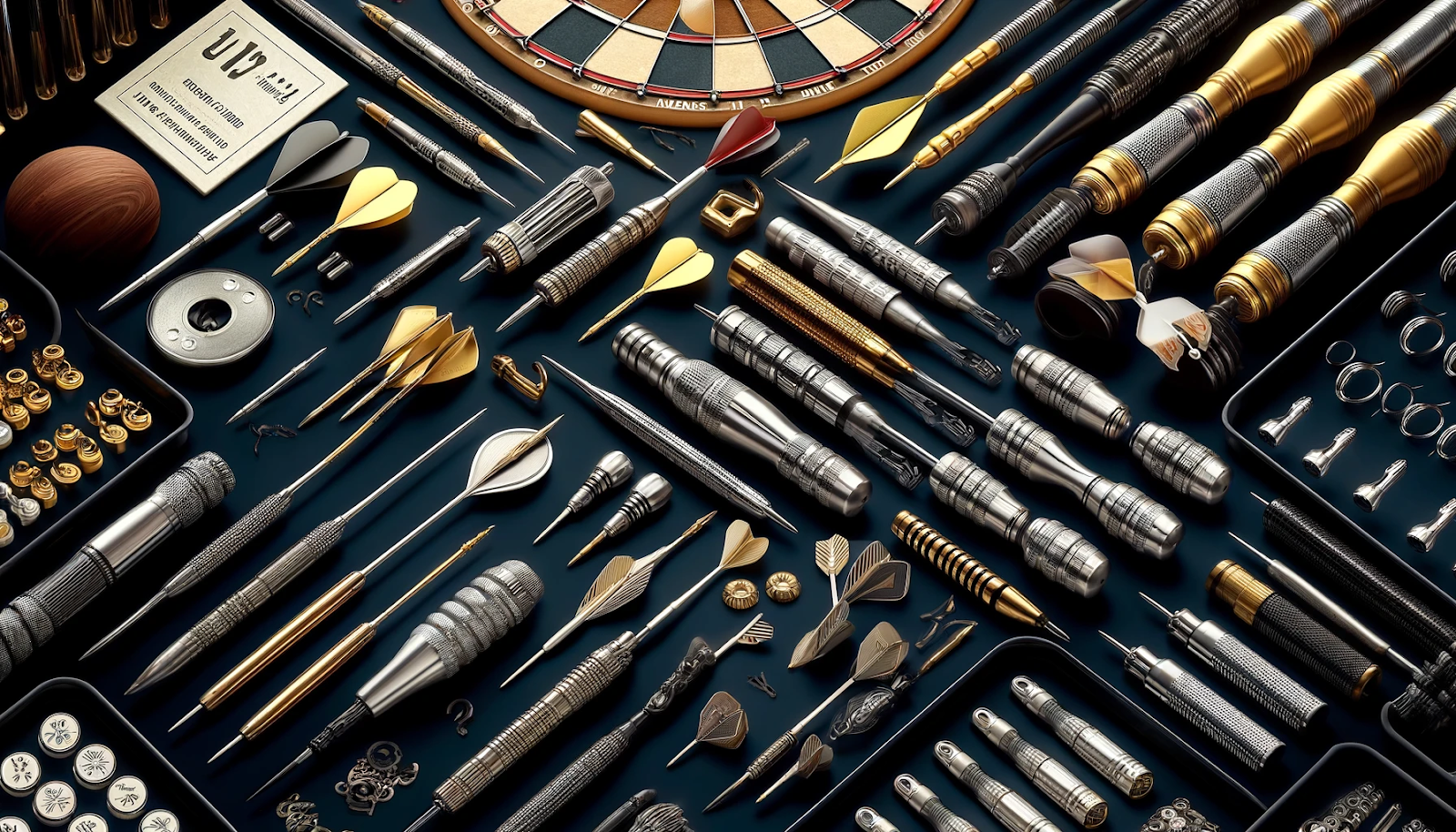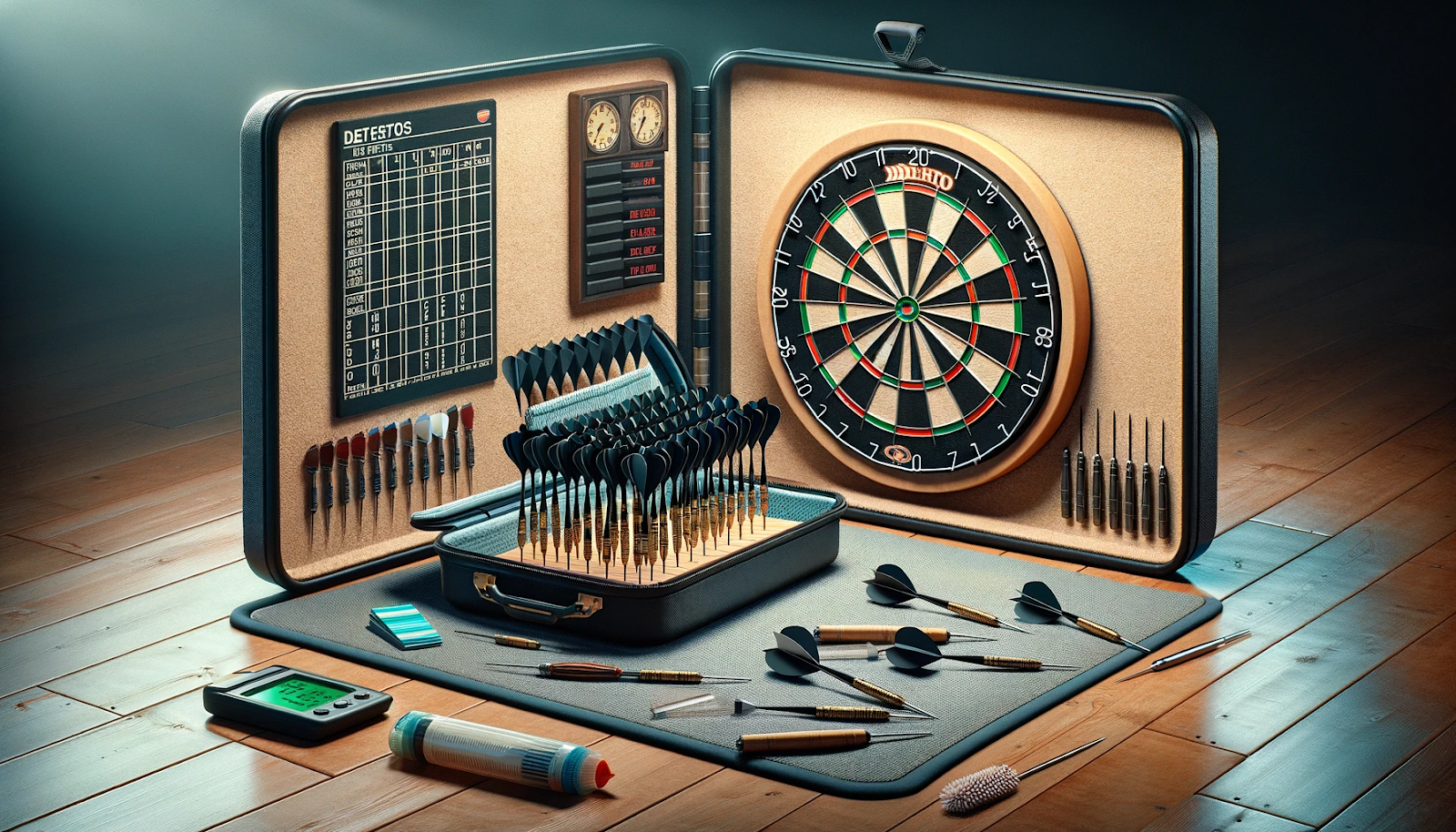When it comes to setting up a dart game area in your home or office, selecting the right darts and dart board is crucial for an enjoyable and competitive experience. With a wide variety of options available in the market, it can be overwhelming for beginners and seasoned players alike to make an informed decision. In this comprehensive buyer’s guide, we’ll explore the essential factors to consider when choosing darts and dart boards, helping you make the best choice for your needs and preferences.
Types of Dart Boards

-
Bristle Dart Boards
Bristle dart boards, also known as sisal dart boards, are the most common and widely used type in professional competitions and home setups. Made from tightly packed sisal fibers, these boards offer a durable and self-healing surface that can withstand repeated dart strikes. Bristle boards come in different quality levels, with higher-end boards featuring a denser and more uniform sisal distribution for improved dart retention and scoring consistency.
-
Electronic Dart Boards
Electronic dart boards have gained popularity in recent years due to their convenience and versatility. These boards feature a plastic surface with built-in sensors that detect dart strikes and automatically calculate scores. Electronic boards often come with various game modes, multiple player options, and the ability to connect with smartphone apps for enhanced gameplay. They are an excellent choice for casual players or those who prefer a more interactive and technology-driven experience.
-
Wooden Dart Boards
Wooden dart boards, also called cabinet dart boards, are traditional and aesthetically pleasing options. These boards are constructed with a wooden backboard and a sisal or cork surface for dart retention. While wooden boards offer a classic look, they may require more maintenance and are less durable compared to bristle boards. They are suitable for occasional play or as decorative pieces in a game room.
Factors to Consider When Choosing a Dart Board

-
Size and Dimensions
Dartboards come in different sizes, with the standard regulation size being 18 inches in diameter. However, smaller sizes are available for limited space or youth players. Ensure that the board you choose fits comfortably in your designated playing area and allows for the proper throwing distance of 7 feet 9.25 inches from the board’s face to the throwing line.
-
Quality and Durability
Invest in a high-quality dart board that can withstand frequent use and maintain its integrity over time. Look for boards with tightly packed sisal fibers, a dense and uniform surface, and sturdy construction. Higher-end bristle boards often feature a rotating number ring and movable bullseye for even wear distribution, prolonging the board’s lifespan.
-
Brand and Price
Consider reputable dart board brands known for their quality and customer satisfaction. Popular brands like Winmau, Unicorn, and Nodor offer a range of options at different price points. While it may be tempting to opt for a cheaper board, investing in a higher-quality product can save you money in the long run by providing a better playing experience and lasting durability.
Choosing the Right Darts

-
Dart Types
Darts come in two main types: steel tip and soft tip. Steel tip darts are used with bristle dart boards and are the standard choice for professional play. They feature a metal barrel, shaft, and pointed steel tip. Soft tip darts, on the other hand, have a plastic tip and are designed for use with electronic dart boards. They are safer and more suitable for casual play or environments with children.
-
Dart Weight
Dart weight is a crucial factor in determining your throwing comfort and accuracy. Darts typically weigh between 16 and 26 grams, with the most common weight being around 20-22 grams. Lighter darts may be easier to throw for beginners, while heavier darts offer more stability and control for experienced players. Experiment with different weights to find the one that feels most comfortable and natural for your throwing style.
-
Dart Material and Grip
Dart barrels can be made from various materials, such as brass, nickel, tungsten, or a combination of these. Tungsten darts are popular among serious players due to their high density, allowing for a slimmer profile without compromising weight. The dart barrel’s grip can also impact your throwing consistency. Look for darts with knurled, grooved, or textured grips that provide a secure and comfortable hold.
-
Dart Shafts and Flights
Dart shafts, also known as stems, connect the barrel to the flight and come in different lengths and materials (e.g., plastic, aluminum, or carbon fiber). Longer shafts can improve stability, while shorter shafts offer more speed and maneuverability. Flights, the fins at the back of the dart, come in various shapes and sizes. Standard flights are suitable for most players, while slimmer or wider flights can adjust the dart’s aerodynamics based on your throwing style.
Accessories and Maintenance

To complete your dart setup, consider investing in essential accessories such as a dart mat to protect your flooring, a scoreboard for keeping track of points, and a dart case for safe storage and transportation. Regularly maintain your equipment by rotating the dartboard to prevent uneven wear, replacing damaged sisal fibers, and cleaning your darts to ensure optimal performance.
Conclusion
Choosing the right darts and dart board is an important step in creating an enjoyable and competitive dart gaming experience. By considering factors such as board type, size, quality, dart weight, and materials, you can make an informed decision that suits your preferences and skill level. Remember to prioritize durability, comfort, and consistency when selecting your equipment, and don’t hesitate to experiment with different options to find the perfect setup for your game room.
With the right darts and dart board, you’ll be well on your way to hours of entertaining gameplay, whether you’re a casual enthusiast or an aspiring professional. So, take aim, throw with confidence, and enjoy the timeless fun of darts!
FAQs About Darts and Dart Boards
What size dart board should I get?
The standard regulation size is 18 inches in diameter. However, you can get smaller sizes for limited space or youth players. Make sure the board fits your playing area and allows for the proper 7'9.25" throwing distance.
How do I choose a high-quality dart board?
Look for boards with tightly packed sisal fibers, a dense and uniform surface, and sturdy construction. Higher-end bristle boards often have rotating number rings and movable bullseyes for even wear. Invest in boards from reputable brands.
What’s the difference between steel tip and soft tip darts?
Steel tip darts have a metal pointed tip and are used with bristle boards, while soft tip darts have a plastic tip for electronic boards. Steel tips are for professional/serious play, soft tips are safer for casual environments.
How do I choose the right dart weight?
Darts range from 16-26 grams, with 20-22g being most common. Lighter darts may be easier for beginners, but heavier ones offer more stability for experienced players. Try different weights to find your ideal comfort and control.
What materials are darts made of?
Barrels can be brass, nickel, tungsten, or combinations. Tungsten is dense for a slimmer profile. Look for knurled or grooved grips. Shafts come in plastic, aluminum, or carbon fiber.
What accessories do I need for darts?
A dart mat to protect floors, a scoreboard, and a dart case for storage are handy accessories. You'll also need supplies for maintaining your board and darts long-term.